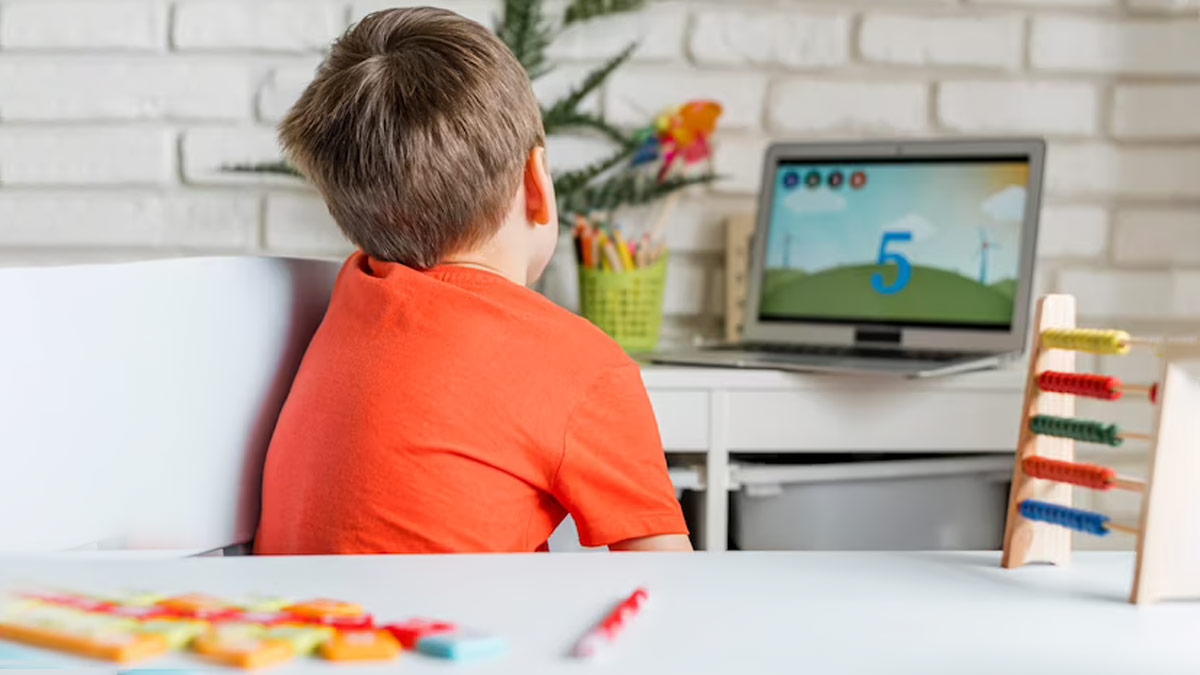
Children learn by exploring the environment with their sensory organs to experience senses and feelings such as, touch, smell, taste, sight, movement, and hearing different sounds in their surroundings. This process is critical for development so when a child is exposed to electronic gadgets, they remain restricted to their virtual world resulting in virtual autism, a condition where young children below the age of three are excessively exposed to screens which further leads to autism spectrum disorder symptoms, a developmental disability causing social communication and behavioural challenges due to differences in brain development.
Table of Content:-
Technology has made things simpler but excessive exposure to technology poses detrimental effects on the growth and development of a child’s brain.
We spoke to our expert Dr Vikas Satwik, Consultant- Paediatrician and Neonatologist, Motherhood Hospitals, Hebbal, Bangalore, who explained virtual autism, its symptoms, causes, and tips to deal with it.
Symptoms Of Virtual Autism

Virtual autism can be recognised if a child experiences these symptoms:
- Decreased cognitive ability
- Hyperactivity
- Inability to focus and concentrate
- Lacking interest in other physical activities
- Excessively invested in the virtual world
- Speech and language impairment due to lack of social interaction
- Irritability
- Shorter attention span
- Frequent mood swings
Also Read: What is Autism Spectrum Disorder? Know Reasons For Sudden Rise In Cases
Causes Of Virtual Autism
Virtual autism occurs due to excessive exposure to screen time like televisions, phones, tablets, and laptops for prolonged periods. Increased screen time in these electronic devices is associated with melanopsin-communicating neurons and decreased Gamma-Aminobutyric acid (GABA) neurotransmitter, leading to obstacles, such as abnormal behaviour, decreased cognitive and linguistic development, and other problems.
When a child is exposed to the virtual environment, their experiences are restricted to visual and auditory sensations, making it difficult for a child to develop normally because they are unable to connect these visual and auditory sensations with other types of sensations, such as vestibular, tactile, smell, and taste which are equally important to foster growth and development.
Can Virtual Autism Be Reversed?
A significant improvement can be observed in the child’s cognition, hyperactivity, and irritability levels when screen exposure is controlled. A definite recovery time cannot be established because every child is different, however, parents should allow their child to interact socially and explore freely by implementing these measures.

1. Minimising Screen Time
It is extremely important to monitor your child’s exposure to screen time. Decreasing screen time allows the child to invest their focus into sharpening skills and engaging in other sorts of creative activities which boosts the child’s confidence to explore the world.
2. Positive Affirmations and Reinforcement
Children appreciate positive affirmations and rewards. Setting goals and offering rewards for good behaviour, such as reducing screen time can be an effective method for making changes in the child’s daily routine.
3. Engaging The Child In Other Activities
Staying glued to the TV screen makes a child stagnant and hampers their overall development. Parents can introduce physical activities or playtime among the child’s peers which allows the child to understand team spirit and social interaction.
4. Initiating Quality Time
Creating and maintaining a bond between children and parents is crucial for the all-around growth of a child. Parents can spend quality time with their children by engaging in activities, such as playing board games, narrating bedtime stories, and going for walks.
Also Read: AIIMS Tool To Map Emotions May Aid To Treat Autism, Schizophrenia And Depression
5. Creating opportunities for face-to-face interactions
For all-around growth and development, parents should ensure face-to-face interactions among the child’s peers and the environment freely. Group playtime can be initiated where children can engage in activities, such as drawing and colouring, playing, and solving puzzles to connect and interact.
Takeaway
Screens have become an indispensable part of our lives and it is nearly impossible to get rid of them completely. However, it is important to monitor a child’s screen time to ensure successful all-around development in the long run. Parents can be mindful of the amount of screen time by drawing a line to avoid worst-case scenarios.
Also watch this video
How we keep this article up to date:
We work with experts and keep a close eye on the latest in health and wellness. Whenever there is a new research or helpful information, we update our articles with accurate and useful advice.
Current Version